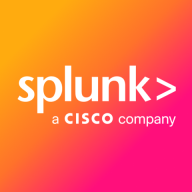

ScienceLogic and Splunk AppDynamics compete in the IT monitoring and application performance management sector. ScienceLogic holds an edge in customer service and deployment flexibility, while Splunk AppDynamics excels in comprehensive application performance monitoring.
Features: ScienceLogic offers expansive multi-tenancy with granular permissions, dynamic apps, and customizable dashboards for diverse system integrations. Its built-in automation boosts operational efficiency. Splunk AppDynamics provides exceptional application and infrastructure monitoring, real-time performance metrics, and transactional awareness. It integrates smoothly with various environments, allowing detailed application flow analysis.
Room for Improvement: ScienceLogic needs better knowledge base and reporting functionalities. Enhancements in its interface simplicity, SNMP trap processing, and API integration are desired. Splunk AppDynamics requires improved support for mobile and cloud technologies, an enhanced user interface, and simpler licensing and pricing models. Users also seek more extensive network monitoring capabilities.
Ease of Deployment and Customer Service: ScienceLogic is highly regarded for its responsive customer service and technical support, accommodating various deployment environments including on-premises, private, and hybrid clouds. Splunk AppDynamics, effective in hybrid cloud deployments, needs better responsiveness in complex issue resolution to compete with ScienceLogic's personalized support.
Pricing and ROI: ScienceLogic offers a flexible pricing model suitable for scaling but can be costly for many devices; however, it shows significant ROI through proactive monitoring and reduced outage durations. Splunk AppDynamics is perceived as expensive due to segmented licensing, yet its investment is considered worthwhile for extensive application performance insights.
The return on investment is fair but often challenged by medium-sized businesses who may question its adequacy.
According to errors, exceptions, and code-level details related to their application performance on a daily basis, the application development team tries to help with Splunk AppDynamics to reduce errors and exceptions, which helps the end users get application availability and feel more confident.
To understand the magnitude of it, when the company asked to replace Splunk AppDynamics with another tool, I indicated that for the proposed tool, we would need five people to do the analysis that Splunk AppDynamics enables me to do.
It's very hard to find ROI because we are currently focused only on the on-premises applications.
Problems with Skylar may require longer wait times due to limited resource expertise.
I received excellent support from ScienceLogic.
We have a lab environment to test solutions before offering them to customers, ensuring everything works correctly.
AppDynamics is much more helpful.
We got a contact, an account manager, to work directly with for technical support.
They help us resolve any issues raised by our team relating to operations, application instrumentation, or any other issues.
We have reached maximum capacity in our tier, and extending capacity has not been cost-effective from Splunk's perspective.
I would rate the scalability of Splunk AppDynamics as a nine out of ten.
I did not find any Docker solution available with it, and a separate instance has to be installed.
Stability should relate to whether the platform fails, stops working, or breaks.
It is necessary to conduct appropriate testing before deploying them in production to prevent potential outages.
There are no issues or bugs with the 20.4 version; it is very stable with no functionality or operational issues.
I can rate it nine out of ten.
While some other companies have easier APIs, using this solution demands significant expertise.
If the knowledge for implementation could be spread through articles, it would reduce this dependency.
Integrating observability and APM monitoring into the overall portfolio would be beneficial.
Splunk AppDynamics does not support the complete MELT framework, which includes metrics, events, logging, and tracing for the entire stack.
If AppDynamics could develop a means to monitor without an agent, it could significantly improve application performance and reduce potential problems.
A good integration with Splunk would be very interesting, as Splunk is a good product for logs, and that part is currently missing in Splunk AppDynamics.
It could be cheaper.
ScienceLogic is not that expensive and is cost-effective overall.
Customers have to pay a premium price, however, they receive considerable value from the product.
All these solutions at the moment are cheap, but it is like paying for insurance; you pay insurance to avoid major damage.
We find its pricing reasonable and competitive.
Notably, its automation features, such as Runbook action, enable domain experts like me to execute one-click automation solutions, which contributes significantly to reducing MTTR.
The solution excels in three areas: application monitoring, server monitoring, and network performance monitoring.
The CMDB update and the automatic CMDB update are valuable.
We have multiple tools, but end users prefer to use Splunk AppDynamics because their portal navigation is very simple and clear.
The feature that I appreciate in AppDynamics Browser Real-User Monitoring is the intuitive and user-friendly dynamic mapping it creates for workflows.
What I like the most about Splunk AppDynamics is the end-to-end observability for the application, along with traces.


ScienceLogic is a comprehensive IT infrastructure monitoring solution that supports networks, servers, cloud environments, and applications, suitable for private cloud and on-premises deployments.
Organizations leverage ScienceLogic for its robust capabilities in monitoring IT infrastructures of all sizes. It offers granular discovery, integration with CMDB, and ticketing systems. Valued for its flexibility, incident automation, remediation, and real-time relationship mapping, it supports hybrid environments with scalable and efficient monitoring functionalities. AI and machine learning enhance its feature set, while ease of deployment and strong support are crucial benefits.
What are ScienceLogic's most important features?ScienceLogic is implemented across multiple industries, including large enterprises, for its capability to handle complex IT ecosystems. Its integration with CMDB and ticketing systems ensures it fits within existing workflows. Organizations use it to monitor diverse infrastructure landscapes, ensuring seamless performance and quick incident resolution.
Splunk AppDynamics enhances application performance monitoring with advanced diagnostics and real-time insights, offering seamless end-to-end transaction tracking and infrastructure visibility.
AppDynamics provides critical tools for businesses to analyze application behavior and performance. Through innovative features like transaction snapshot analysis and adaptable dashboards, users can quickly identify and address issues, ensuring high levels of system uptime and efficiency. It is designed to support complex environments including Kubernetes and AWS, enhancing user experience by detecting performance issues early. Despite needing improvements in network monitoring and integration, it remains a robust option for tracking application health.
What are the key features of AppDynamics?In industries like financial services and e-commerce, AppDynamics facilitates performance tracking across distributed systems, optimizing infrastructure to meet consumer demands. It excels in environments needing precise transaction monitoring and is pivotal in delivering high value and satisfaction.
We monitor all IT Infrastructure Monitoring reviews to prevent fraudulent reviews and keep review quality high. We do not post reviews by company employees or direct competitors. We validate each review for authenticity via cross-reference with LinkedIn, and personal follow-up with the reviewer when necessary.